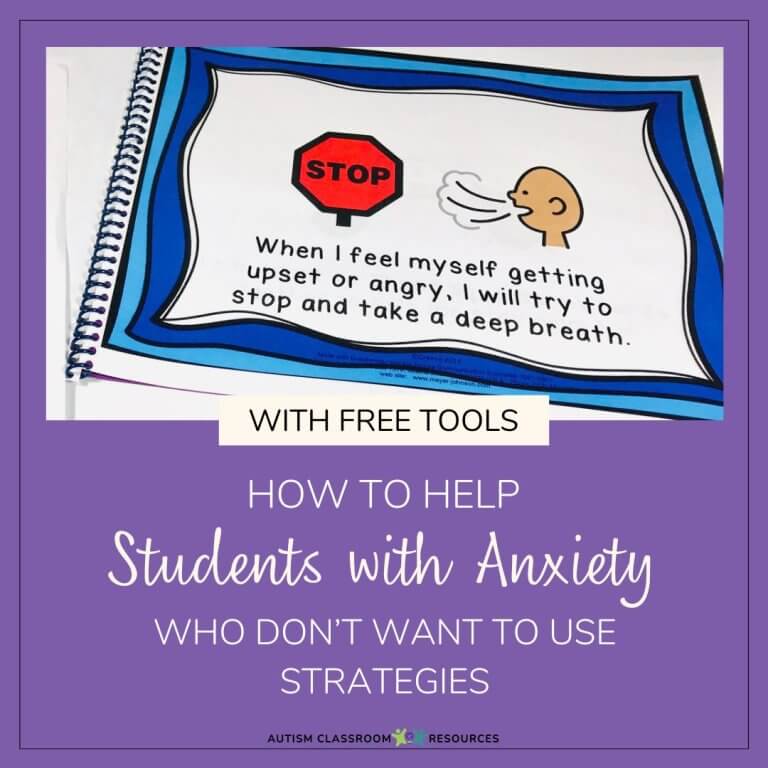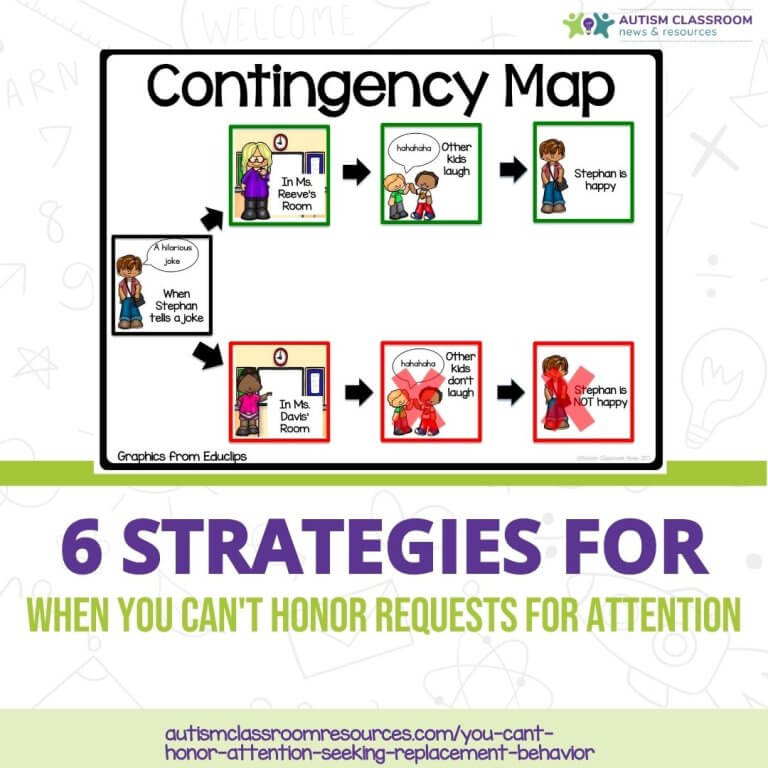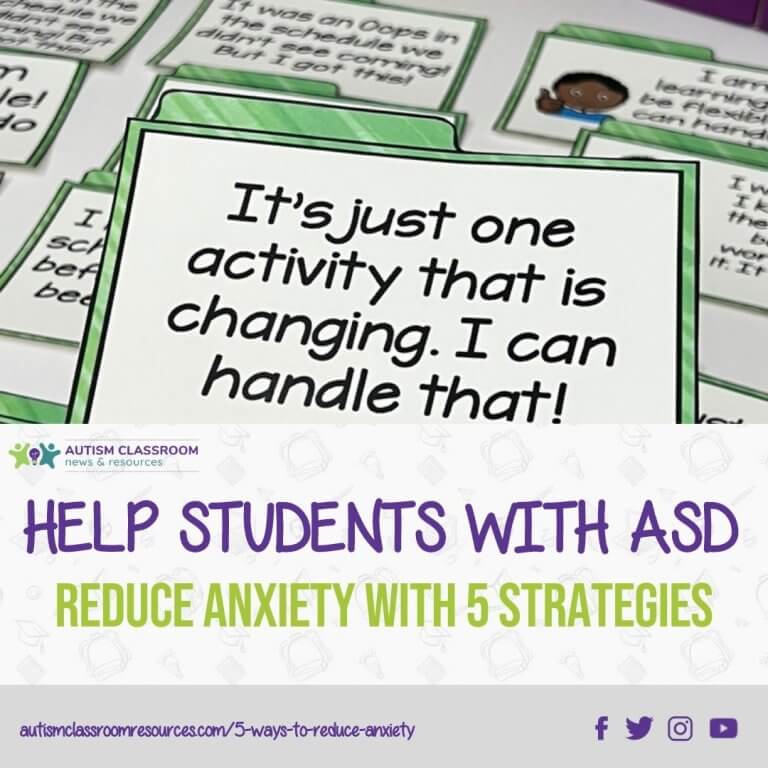Sharing is caring!
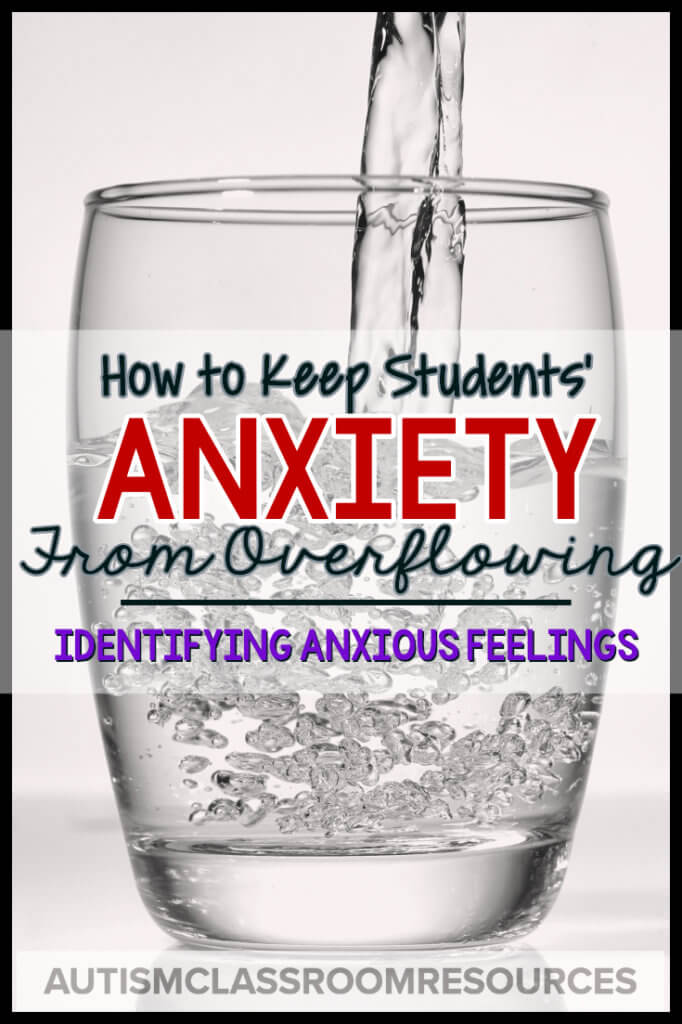
Did you know that nearly 40% of individuals with ASD also have some form of anxiety? The general population ranges from 2.2% to 20% depending on the assessment and the age. For a long time we have known that individuals with ASD are likely to have depression and anxiety disorders.
Also, if you work with students with emotional behavior disabilities, anxiety is a form that often takes that we aren’t always even aware of. The students who draw inward in response to their fears are easier to identify as having anxiety. But those who strike out, are aggressive, and battle their way through are not as easy to identify. Yet many of them also have some form of anxiety disorder.
What Does Anxiety Look Like
Sometimes the anxiety is specific, like being scared of the noise the fire alarm makes. Other times, the cause or specific fear isn’t something the student can identify or name and it just feels like they are crawling out of their skin.
Many times, these feelings show up looking like meltdowns and behavior problems. Activities that may be fine with no problems on most days suddenly spark meltdowns and tears or aggression when the anxiety is high.
Does Anxiety Create Challenging Behavior?
Anxiety can trigger challenging behaviors in some situations. For instance, if a student has obsessive-compulsive disorder and you stop him from completing his compulsive ritual, he may lash out with challenging behavior.
More frequently, anxiety acts as what we call a setting event for behavior problems. It doesn’t trigger the behavior, but it makes it more likely that some other event will trigger it that day. It often explains why some students can be perfectly fine in the same situations one day and a mess the next–if their anxiety is high, they can’t handle it that day. 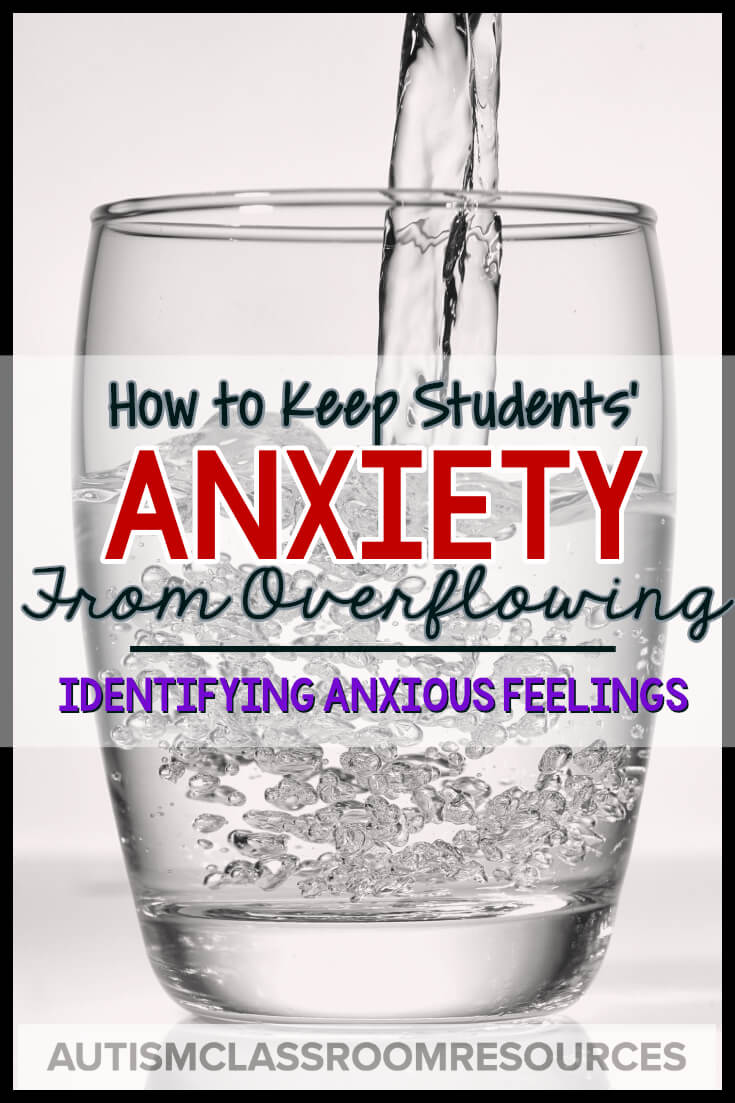
How Does Anxiety Affect Behavior?
It is important to remember that anxiety builds up as well over time and little things can contribute to it until it becomes too much to handle.
Think of anxiety like a glass of water. It might start out half-way full. As things happen (work demands, social demands, environmental / sensory demands), water (anxiety) gets added. If enough water gets added, the glass it overflows. When it overflows, you get a meltdown to something that often seems insignificant. It’s kind of like when you find yourself crying over a broken dish in the kitchen at the end of a long day.
Then if a student’s glass of water is already high (i.e., anxiety is high)…it doesn’t take much to make the glass overflow. So some days, little things make the anxiety overflow the glass and you get more significant behavior.
Identifying Anxiety in the Moment
One of the things that makes anxiety tricky is identifying it as the problem. It’s difficult for individuals feeling it to recognize it. And due to that and the communication difficulties of students with ASD, it’s difficult for them to communicate when they are feeling anxious. And when you add in the stressors of situations that make anxiety rise, identifying their own anxiety becomes more difficult.
This post contains affiliate links for purchases. I only recommend resources I use myself. The price is the same to you, but it gives me a small commission to keep finding them for you.
Helping Students Identify Anxiety
When trying to address anxiety and prevent challenging behavior, one of the first strategies is to help the individual recognize feelings. There are a few strategies you can use to help students recognize their feelings of anxiety as that first step.
1. The Incredible 5-Point Scale
One of the best tools I’ve found for helping individuals identify their stressful feelings is The Incredible 5-Point Scale. This is a scale developed by Kari Dunn Buron that helps individuals rate a number of things from feelings and anger to voice volume. In the case of anxiety, a 1 would be calm and quiet and a 5 would be out of control.
You can read more about how I use the 5-Point Scale here. There are a few things that make it a really useful tool for anxiety.
- The ratings are quick and easy to do. And the numbers can easily become a shorthand way to identify the level of anxiety. It’s easy to say, “I’m feeling like a 4” rather than explain anxiety.
- You can link the ratings to strategies. If I feel like a 3, I should take 3 deep breaths.
- And you can use the ratings over time to track whether the anxiety is improving.

The 5-point scale can take different looks depending on what it is being used for. The typical one on the right that the student completes. The abbreviated version on the lanyard for quick reference after the student has completed one. And the group check-in that could be used daily with a whole class on the right.
The student works with an adult to learn to identify the anxious feelings and equate them to the scale. It’s visual and you can write the feelings and the strategies down next to the numbers to help them remember.
2. Reflective Listening
Interpret stressful behavior for the student when you see that he is showing signs of becoming anxious. For instance, “There are too many people talking and you feel tense.” If you are using the 5-point scale, you could say, “I see your shoulders are bunching up by your ears, you look like you might be feeling like a 3.” This helps the student to identify the feelings he or she is feeling.
3. Parallel Talking in Natural Situations
You can highlight the facial expressions and body language for the individual (their own and others). For instance, “When Tommy tripped and fell, it hurt. He is crying. Sometimes people cry when they are hurt or scared.” Or for an older student, “I bet Jim is feeling pretty nervous about his presentation to the class. Look at how he is sweating and fidgeting around!” You could ask peers to do this as well about their feelings to model for the student.
4. Model Feelings and Emotions
Finally, you can highlight how you feel by exaggerating your facial expressions and talking about your feelings, anxieties or frustrations. I used to work with a student who would panic and melt down if he made a mistake. He would erase through the paper, end up tearing up his paper. If he made more mistakes or the paper tore, he would start throwing thing. For him, we modeled when we made a mistake (e.g., “Oops! I messed up. I am so frustrated; I forgot my lunch!” or “Oh no, I spelled this word wrong again on my paper! I will try to stay calm and erase it and try again.”) Peers could also do this to help a student see when they are stressed.
Obviously identifying when they feel anxious isn’t the end of the process. In my next post I’ll talk about strategies for reducing the anxiety. Until then, if you have a student like the one in #4 who hated mistakes, you might like my I Can Handle Making Mistakes Toolkit.
And if you are looking for tools to use the 5-Point Scale or address anxiety, check out my Amazon storefront of tools for anxiety including Kari Dunn Buron’s books.
Until next time,



